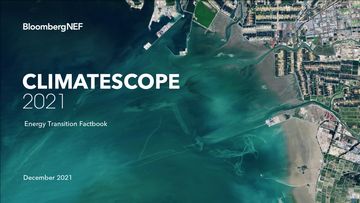Oman
With a cumulative score of 1.75, Oman ranks number 20 among emerging markets and number 47 in the global ranking.
- Emerging markets
- Middle East & Africa
2.13 / 5
Power score
0.87 / 5
Transport score
Buildings score
Only 56 markets (28 emerging markets) are scored on the Buildings sector. See the full list on the methodology page.
Low-carbon strategy
Net-zero goal and strategy
Oman does not have a net zero goal or strategy as of September 2021 due to its high dependence on oil and LNG.
The country is reportedly considering taking on a zero emissions target by 2050, but no formal legislation or plan has been made yet.
Nationally Determined Contributions (NDC)
Oman aims to slow greenhouse gas emissions growth and reduce them by 7% in 2030, compared to the business-as-usual scenario where emissions are predicted at about 125.254 MtCO2e. The country intends to reduce 4% of these emissions based on national efforts, and eliminate the balance 3% via grants and financing in addition to capacity building, institutional strengthening and access to appropriate technologies.
Fossil fuel phase-out policy
The country also has no policy to phase out fossil fuels due to its high dependence on oil and LNG, but has a plan to taper down imports of LNG from Qatar.
Power
Power policy
Oman has ambitious plans to transition to cleaner and more sustainable energy, with a target of 16% electricity generation from renewables by 2025, and 30% by 2030, starting from close to zero in 2018. To achieve these targets, the country is aiming for 3,050MW of new renewable energy plants by 2025, including utility-scale solar and wind, plus a smaller waste-to-energy plant. Over 1,600MW of solar projects have been auctioned as of September 2020. In addition, financial incentives such as the government-led subsidy for rooftop solar for residential customers and support for foreign investment can spur renewable energy uptake in the country.
Power policies
Power prices and costs
Similar to other countries in the region, Oman’s electricity prices are highly subsidized for residents. Prices paid by consumers were static from the early 1990s until 2017 and only covered about 54% of production costs. In 2017, the country introduced a cost-reflective tariff that removed subsidies for customers whose yearly use exceeds 150MWh (effectively commercial customers). Oman has completely removed power and water subsidies for the biggest consumers including non-residential consumers such as industrial, tourism, commercial and government entities in January 2021. Starting from April 2021, Oman also introduced value-added tax (VAT) on power, which added 5% to the previous power price to Oman citizens except from those who owns two accounts of less of residential category. As of July 2021, Oman has a plan to trial a spot power market, which could introduce more competition and lower the cost of power.
Power market
In Oman’s power market, generation is open to private participation, and includes companies like Wadi Jizzi Power and Al Ghubra Power. Oman's power transmission is monopolized by Oman Electricity Transmission Company (OETC). In 2019, Oman sold 49% of OETC's stake worth $1 billion to Chinese transmission and distribution operator, State Grid Corporation of China (SGCC). The transparency on the grid extension plan may be improved with the introduction of other stakeholders. The power distribution companies are state-owned and retain a monopoly over all distribution.
Installed Capacity (in MW)
Electricity Generation (in GWh)
Utility privatisation
Which segments of the power sector are open to private participation?
Wholesale power market
Does the country have a wholesale power market?
Doing business and barriers
Oman has a relatively stable and open business environment. In terms of the power sector, it has allowed 100% foreign ownership of companies and properties, and has begun privatizing its electricity companies. While these moves can attract investments, Oman’s fragmented renewable energy policies could hinder the rollout of renewables projects. A comprehensive renewable energy regulatory framework could help better integrate renewables.
Currency of PPAs
Are PPAs signed in or indexed to U.S. Dollars or Euro?
Bilateral power contracts
Can a C&I (Commercial and Industrial) customer sign a long-term contract (PPA) for clean energy?
Bilateral power contracts
Can a C&I (Commercial and Industrial) customer sign a long-term contract (PPA) for clean energy?
Bilateral power contracts
Can a C&I (Commercial and Industrial) customer sign a long-term contract (PPA) for clean energy?
Fossil fuel subsidies
Does the government influence the wholesale price of fossil fuel (used by thermal power plants) down through subsidies?
Fossil fuel taxes
Does the government influence the wholesale price of fossil fuel (used by thermal power plants) up through taxes?
Transport
EV market
The passenger EV market has yet to materialize in Oman, but it has mandates on EV charging infrastructure.
EV policy
The country has yet to implement regulations on EV development and deployment, but it has mandated EV charging points at all new fuel stations from December 2019 onwards.
Transport policies
Fuel economy standards
Does the country have a fuel economy standard in place?
Buildings
Buildings market
The low-carbon heat market remains at an early stage.
Energy performance standards
Are there minimum energy performance standards for buildings?
Energy efficiency plan
Does the country have a national energy efficiency plan?
Buildings policy
The government has yet to implement any substantive policy support in this sector. For home appliances, the country adopted GCC Standard GSO 2530/2016 as an obligatory Omani Regulation for energy labeling and has set minimum energy performance benchmarks for air conditioners. Oman also issued draft energy performance standards for washing machines, water heaters and refrigerators in August 2020. The draft had not been passed as of August 2021.

